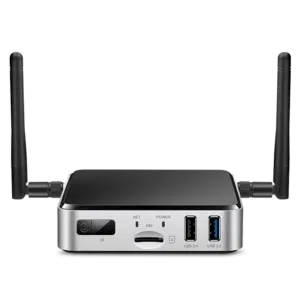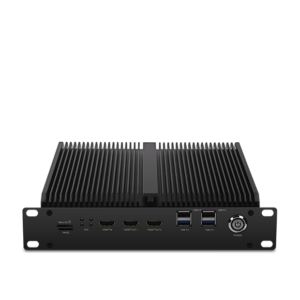The Influence of Operating AI on Edge Devices
The Influence of Operating AI on Edge Devices
Blog Article
A Detailed Information to Deploying AI on Side Devices
Real-World Purposes of AI on Edge Units
Synthetic intelligence (AI) is no longer limited to the sphere of large, centralized knowledge centers. As a result of advancements in engineering, side products now play an integral position in deploying AI right where data is generated. But what does AI on edge products mean, and why is it creating such a buzz? Here, we'll examine how embedded edge ai works in the real world through edge products and reveal their wide variety of practical applications.

What's AI on Edge Products?
AI on side units refers to deploying synthetic intelligence methods directly on units like smartphones, cameras, drones, or IoT sensors. These units do not need access to centralized hosts for handling knowledge; as an alternative, they perform analysis and choices locally, creating the method quicker, more effective, and often more secure.
The "edge" here simply describes computing done near or at the foundation of knowledge technology, as opposed to depending on the cloud. That change is driven by the requirements for real-time information control and the necessity to decrease latency, enhance privacy, and reduce bandwidth usage.
Crucial Real-World Programs of Side AI
1. Intelligent Security
AI-powered cameras designed with skin recognition, activity detection, and anomaly recognition are transforming detective systems. Edge units in this domain can analyze video channels in real-time to spot suspicious actions, remove false alarms, and enhance community safety. As an example, AI calculations can find strange actions and alert authorities instantly without the necessity to deliver movie information to a main server for analysis.
2. Healthcare Monitoring
Wearable units and portable medical gear are leveraging m.2 ai accelerator for controlling wellness knowledge more efficiently. Edge-based AI in devices like health trackers and smartwatches displays users' vitals, such as for instance heartrate, oxygen levels, or body pressure, in real-time. These systems analyze information locally and give immediate feedback, paving the way in which for faster intervention all through emergencies.
Beyond wearables, advanced medical imaging units equipped with on-device AI can find signs of conditions like cancer, allowing earlier in the day diagnoses even yet in remote areas without net connectivity.
3. Autonomous Vehicles
Self-driving cars are among the most well-known types of edge AI in action. With receptors, cameras, and LiDAR techniques offering as information sources, AI computations take position onboard these vehicles to make split-second decisions. From sensing pedestrians and limitations to moving city streets, edge AI assures that the vehicle operates reliably and efficiently. The real-time running convenience of edge devices eliminates the reliance on high-latency cloud systems, ensuring safety in life-critical scenarios.
4. Retail Analytics
Side units in retail environments are supporting companies analyze client behavior. Intelligent cabinets and AI-equipped cameras may detect customer preferences, check stock, and even customize in-store experiences in real time. The info made from these units helps stores produce knowledgeable decisions, improve client satisfaction, and enhance stock management.

5. Industrial IoT
Factories and commercial crops are adopting edge AI to revolutionize their checking and automation processes. AI-powered devices on machinery discover possible defects a long time before they result in expensive failures. Predictive preservation driven by edge AI decreases downtime, improves output, and ensures protection on the production floor.
6. Customized Activities in Consumer Units
Your smartphone is a prime exemplory case of how side AI personalizes person experiences. Characteristics such as for example voice personnel, versatile camera controls, and on-device language interpretation use real-time AI to respond to consumer needs without sending sensitive information to additional servers. That fosters equally convenience and solitude for the conclusion user.
The Rising Influence of Side AI
The use of AI on edge products remains to surge, driven by industries' raising demand for low-latency, real-time computing, and better data privacy. Its applications are reshaping industries including healthcare and automotive to community security and retail. By putting AI's power closer to wherever information is created, edge devices aren't only increasing performance but in addition showing the endless possible of development in the current linked world. Report this page